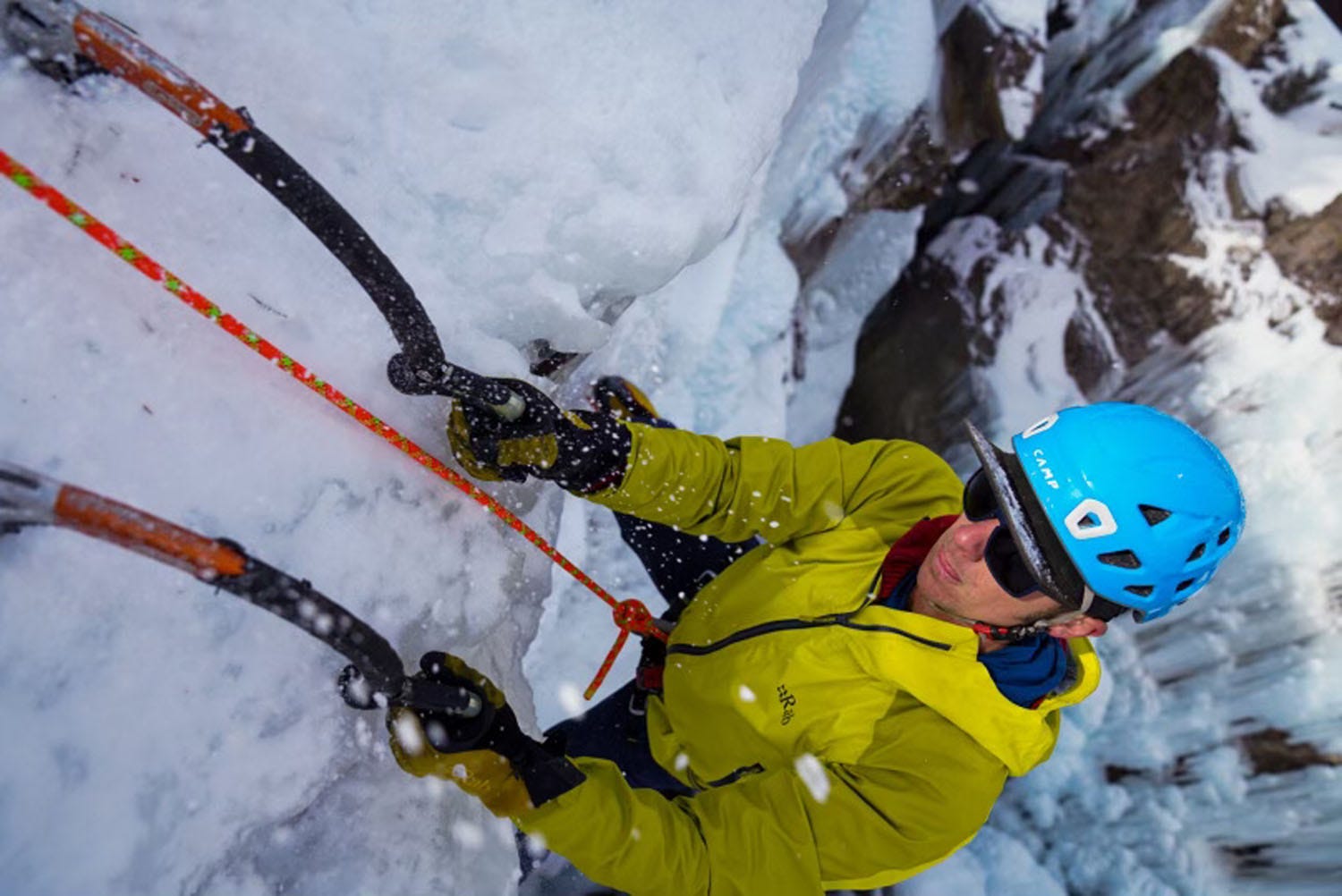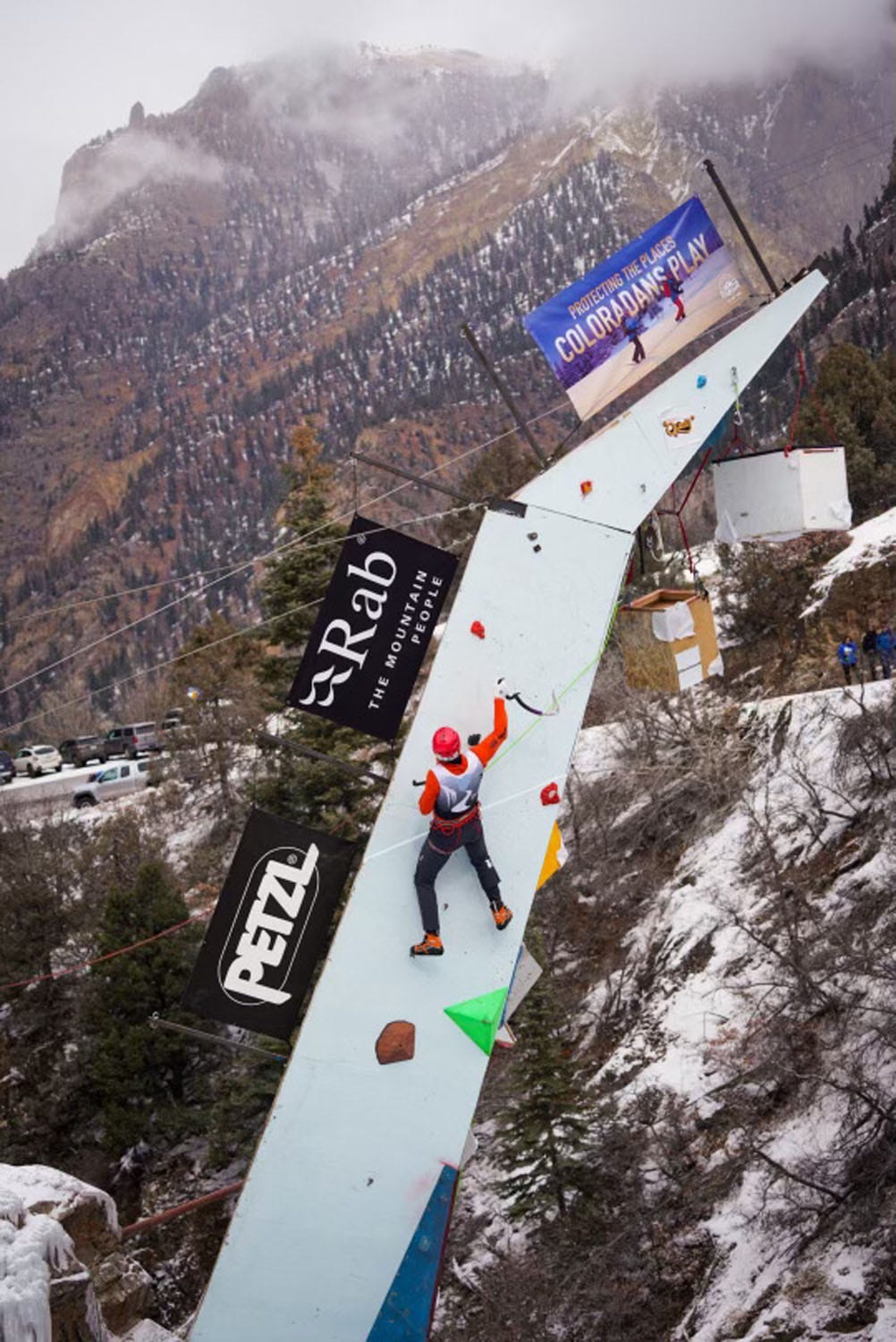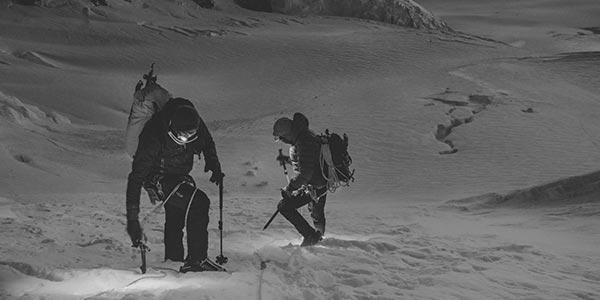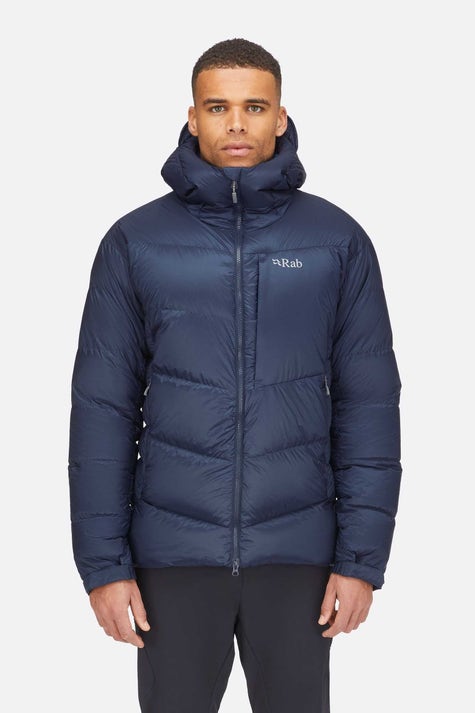

The Ouray Ice Festival challenged me in a new way this year. At first, I felt dislocated and separated for not competing. But I was able to pivot away from standing in the shadows, alone, to feeling part of a much larger community of people seeking belonging, as each of us tackle the challenges and mysteries ahead.
The tradition started when I moved to Colorado in 1999. Tucked in a far corner of the San Juan mountains situates the town of Ouray. It is one of those places of magazines and travel guides. Massive mountains provide a gargantuan backdrop for bungalows, with styles and colors deeply rooted in the town's mining history, crowding the streets that likely don’t exceed the count of a couple dozen. Meltwater from high in these local mountains is channeled through a massive pipe bringing freshwater to local townsfolk and businesses. During winter, this waterway also feeds the nearby Box Canyon with water. Box is an understatement. Through tens of thousands of years, the Uncompahgre River has incised a deep gouge through the bedrock. Water from the pipe drizzles out of countless spickets, freezing on the cliff walls leaving hundreds of ice daggers, columns and flows.






The quiet town of Ouray awakens as thousands of ice climbers make the pilgrimage to the canyon to climb ice. It is here that I have visited every year since 1999. Executive Director of the ice park, Peter O’Neil, likens the ice and the festival to skiing in Telluride. Without skiing, Telluride would not exist. Similarly, ice climbing defines the life blood of the small vale of Ouray, and, January is the crowning jewel of Ouray’s ice. People mark their calendars and businesses ready themselves with the build-up for the Ouray International Ice Festival. While the town normally has 900 inhabitants, the population easily triples as ice climbers from all over Colorado, United States and even internationally, come to celebrate the cold. Clinics are available for anyone to learn from North America’s best ice climbers. Tens of companies stake out their tents just above the ice for the throngs to visit and rent gear. Elite climbers congregate for the world-recognized mixed climbing competition.
For most years of my adult life, I have participated in the festival, and it was the prospect of teaching clinics and taking part in the competition that pulled me powerlessly in. How could I turn away from joining my best friends to try and unlock each year’s mysterious competition route? All of us would throw ourselves at the line, overhanging the canyon, matching our minds and fitness to decipher how to reach the top. Few ever make it to the top, however, the mere possibility of reaching a little farther than you ever expected was the carrot. Even after the competition, participants would gather in local restaurants hooked on solving the mystery.
This year was a little different. I could tell in my bones that I wasn’t ready for the competition. Perhaps I needed a break, and I had not been training. So, I explored the idea of participating in the festival in a new way. By coupling the visit with a passion project that has occupied my attention for the last year or so.






Our precious winters are changing. Cold isn’t quite as cold. The season for which ice adheres to the cliffs of Ouray is shortened. Leaving for the Ice Fest, I was 6 months into producing a documentary about climbing and climate change. So, I tasked myself with learning more about what participants and town citizens thought about the changing climate and feelings of empowerment around being able to do something about increased warmer temperatures. I also wanted to get first hand perspectives on the future of the town of Ouray.
It seemed almost fitting that, as I rolled into town, the snowpack on the ground was lower and more rotted by high temperatures than I have ever seen. Even though I could descend into the box Canyon where huge daggers and columns of ice survived the previous week‘s hot spell, it was unavoidable. Something was off.
As always, my clinics were a highlight. The finest people, curious and engaging one of my favorite activities. However, for the first time ever, conversations turned to a feeling of helplessness around the future of the ice park. Frustration. Sadness. Helplessness. So many knew that they wanted the ice park and town to thrive, but communicated feelings of being stuck - how can each person actually have a positive effect on the changes that we were experiencing first hand? Fear and shame for not doing more seeped out in interviews.
Each day was marked by climbing out of the canyon to stand in the sun and watch the competitors climb. The enthusiasm was high. The routes demanded that the competitors dig deep and use their imagination. The crowd cheered. The ice slowly melted.






I’ll be the first to admit - I was drawn into a morass. I sought shadowed corners to try and reconcile what I was seeing and feeling. I remember standing in my mountain boots between competitors thinking about just how hard each competitor worked. I looked at competitors cheering other competitors on to be the ones to unlock the competition route. It wasn’t just for the best climber, but for any climber willing to stand at the bottom of the route and launch into their best efforts. People were encouraged to be different and creative. It was a nucleus of people banding together to become bigger and better, and try our best, no matter who we are.
And then a switch was thrown in my head. We can task ourselves to action, be it climbing or steps towards a more sustainable future. We can all do this alone, taking our own steps towards success. However, I felt my conviction to engage with the climate emergency swell as I thought about us tackling this with an encouraging community. Something as personal as climbing was made tenfold better and the competitors tenfold stronger when they united to support each other. When the fate of the town of Ouray is just one example of millions of scenarios where changing climate threatens livelihoods, health, culture and traditions, there is so much potential for using changing climate to bring people together around a common goal, with encouragement.
The Ouray Ice Festival challenged me in a new way this year. At first, I felt dislocated and separated for not competing. But I was able to pivot away from standing in the shadows, alone, to feeling part of a much larger community of people seeking belonging, as each of us tackle the challenges and mysteries ahead. On my drive out of town, I chose to direct this lesson towards the making of my climate documentary - how can I be more welcoming to those people, who feel frustrated, hopeless or shameful, to join the challenges ahead. The community of climbers at the Ouray Ice Fest taught me this.
Ryan Vachon excels on the steep, physical ice and mixed climbs found around his home in Boulder, Colorado. As a climate scientist he has more than a passing interest in the medium, but is far from being exclusively an ice climber.
Read more about Ryan here









